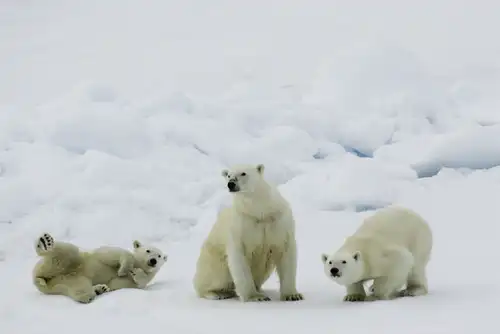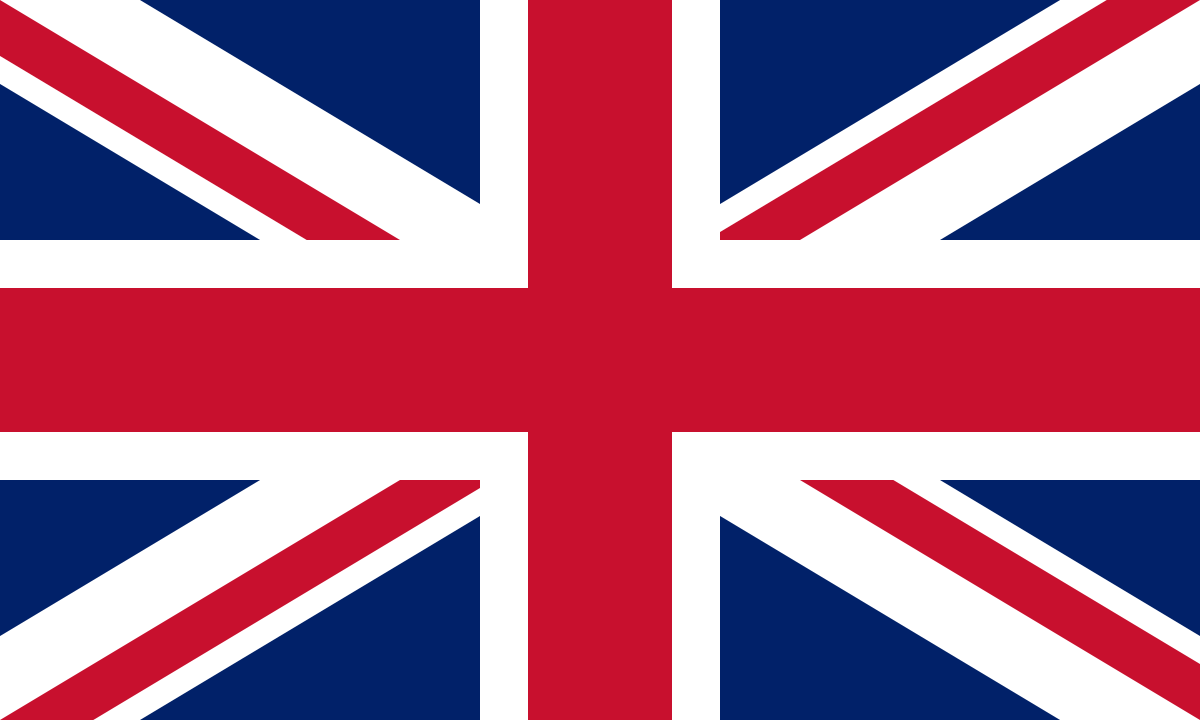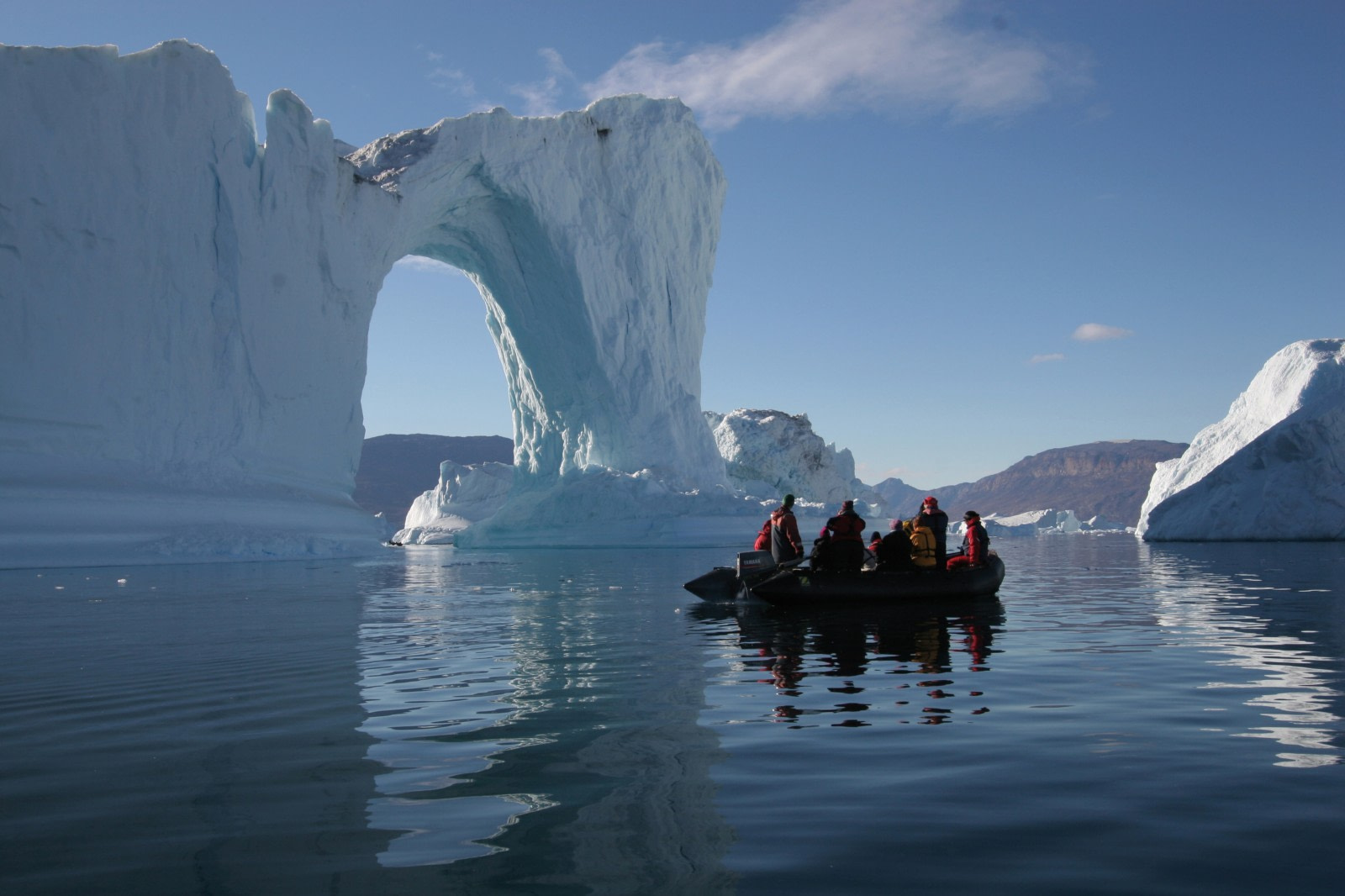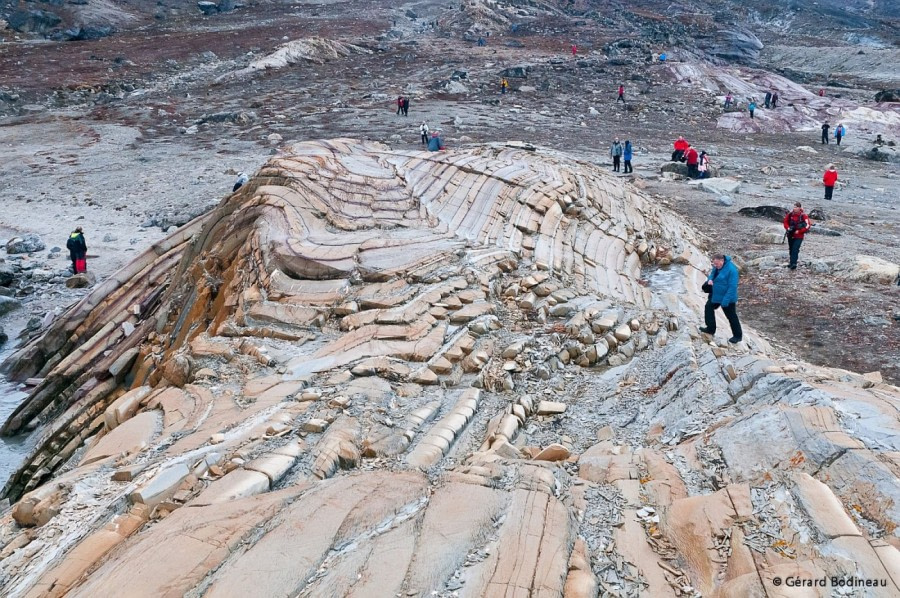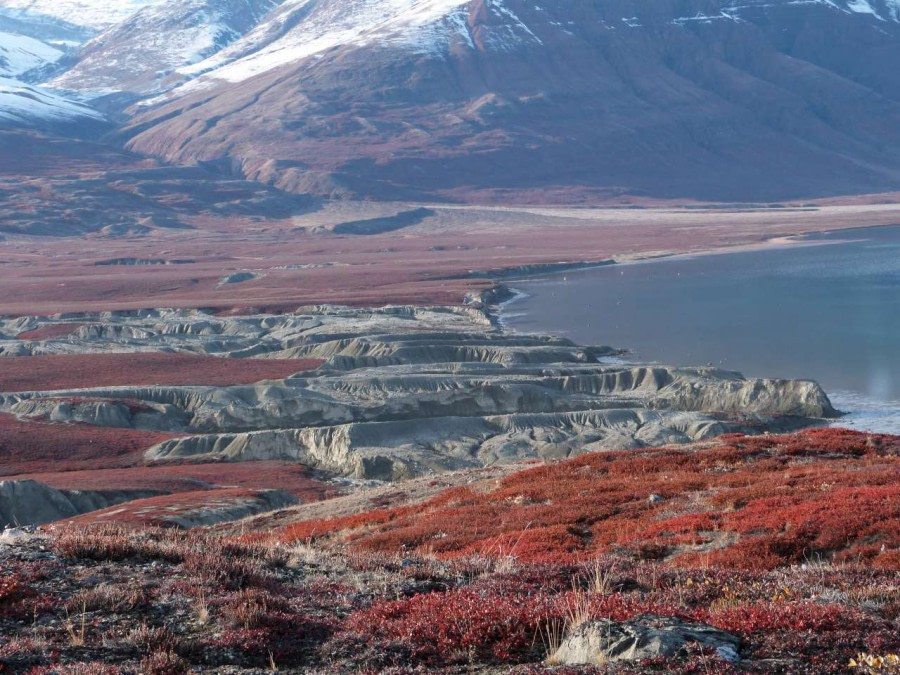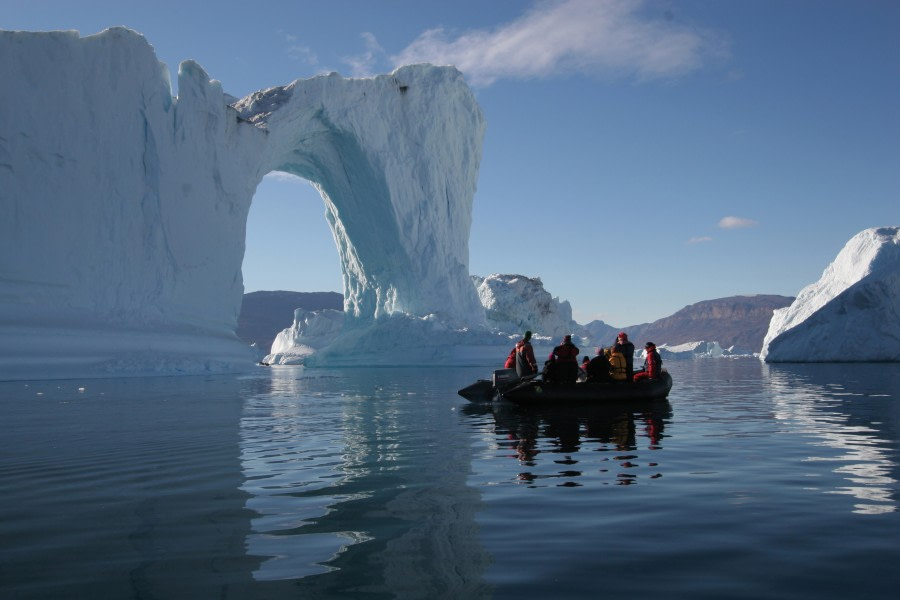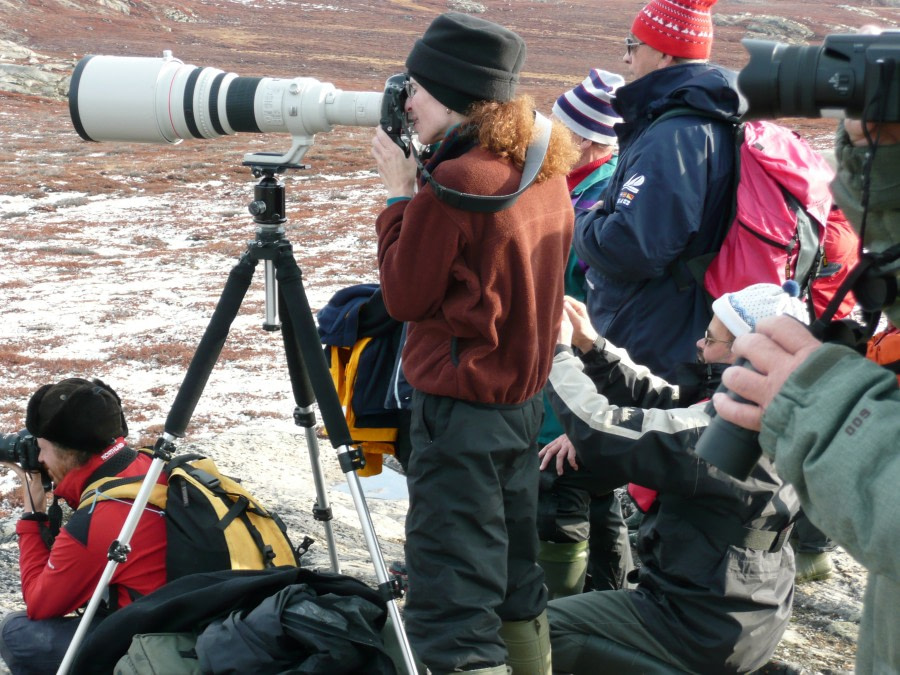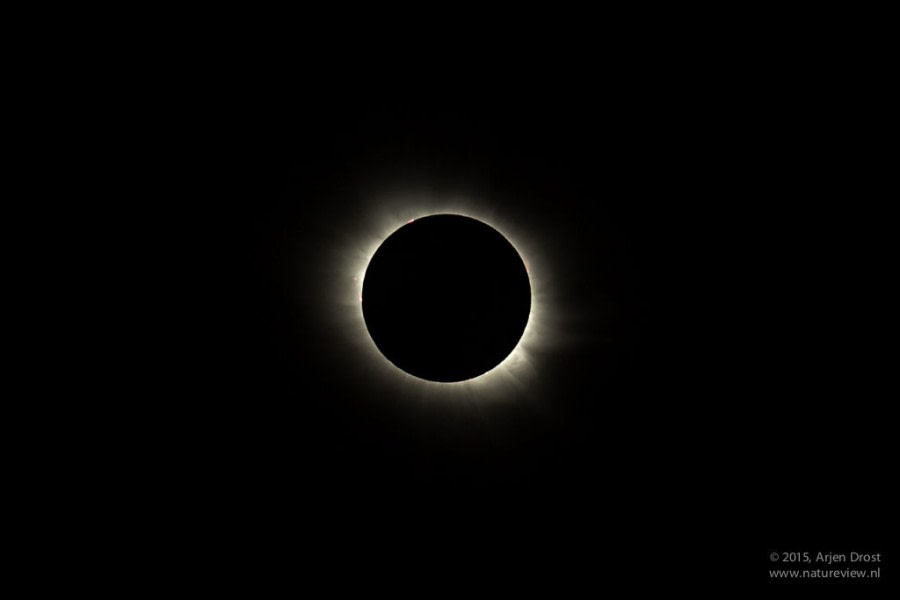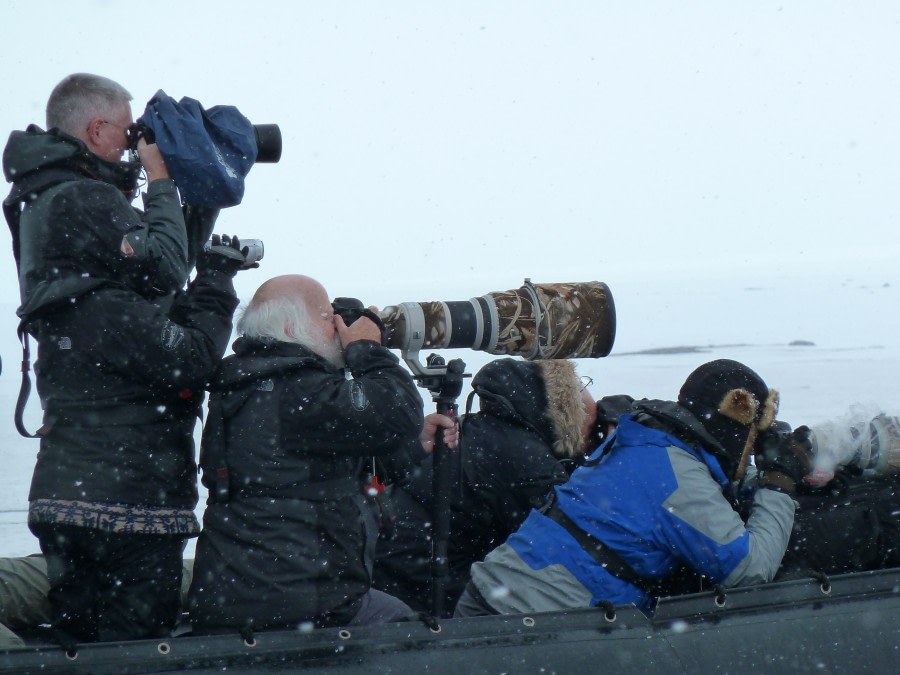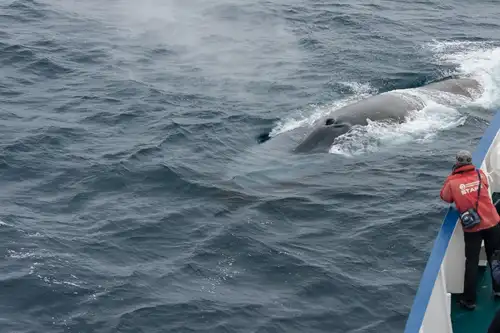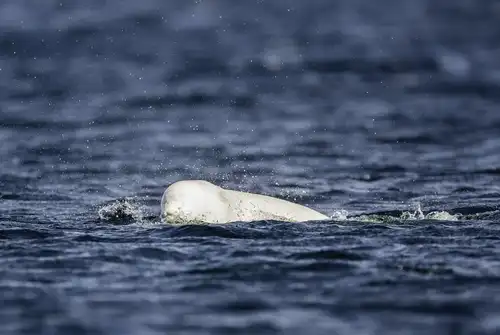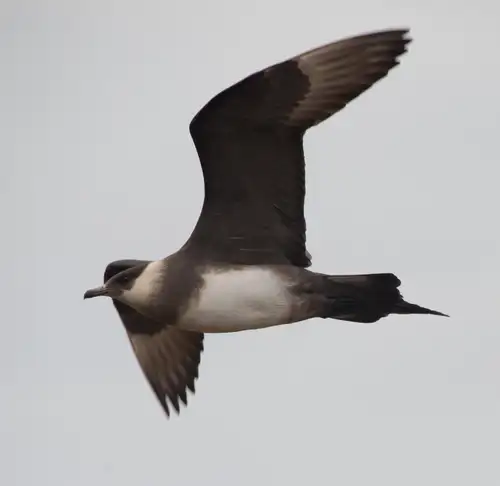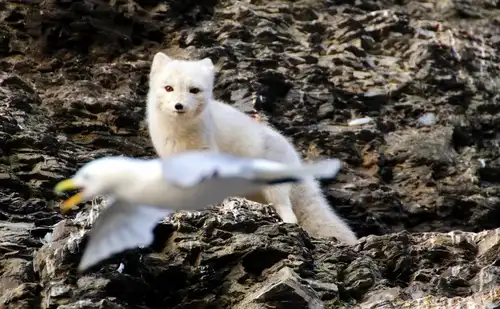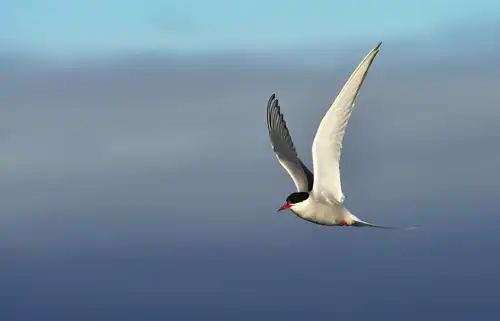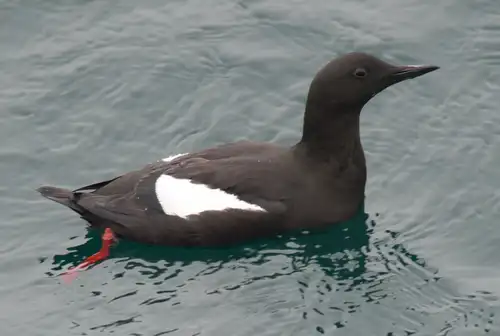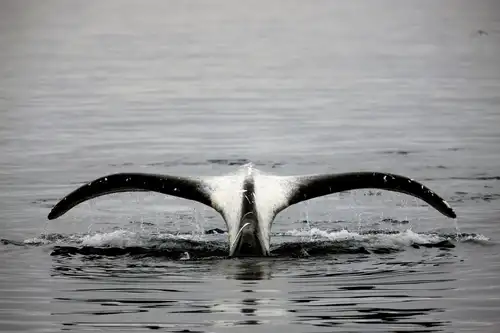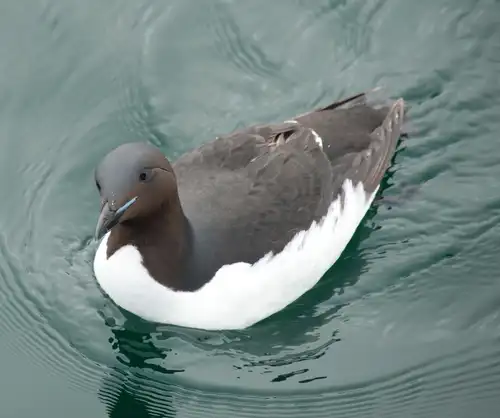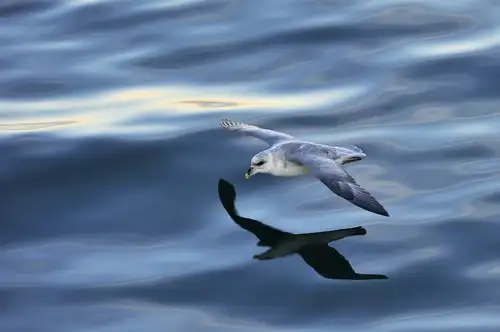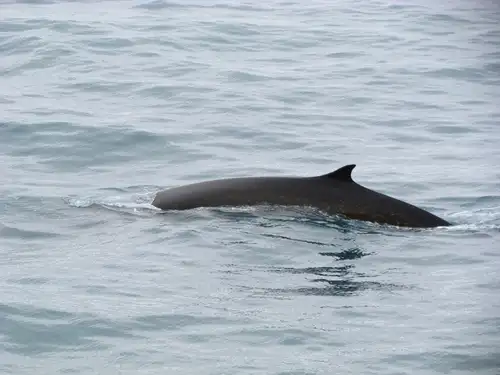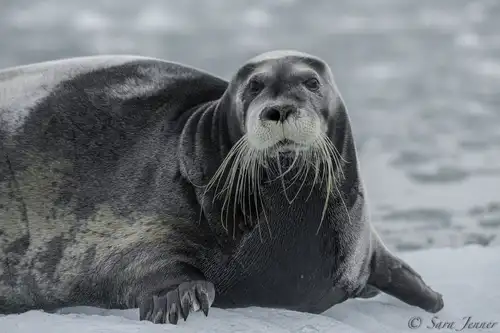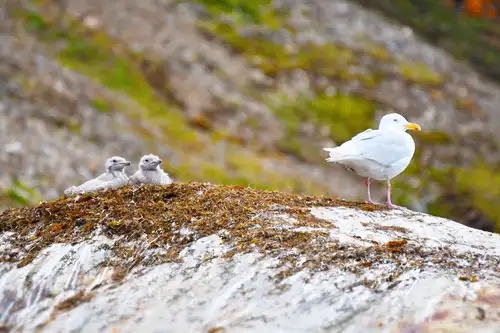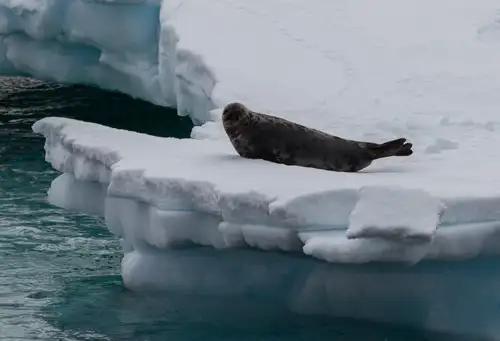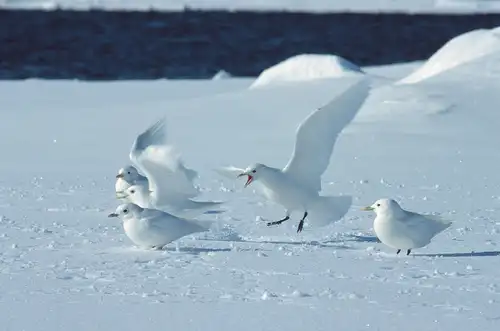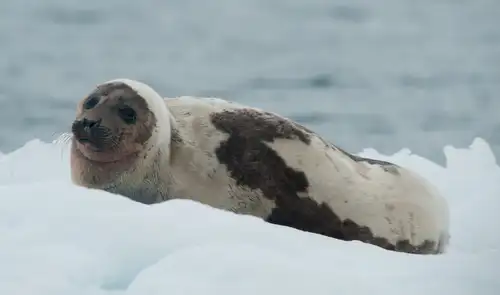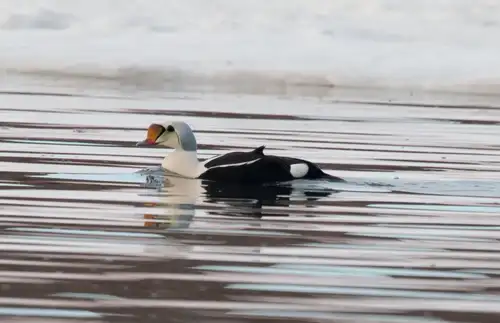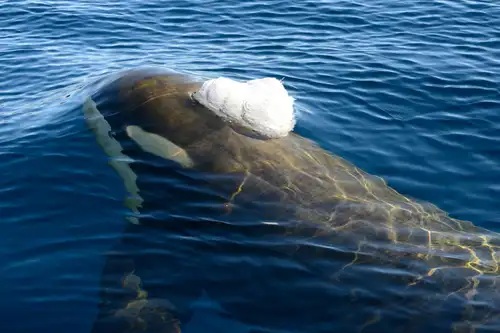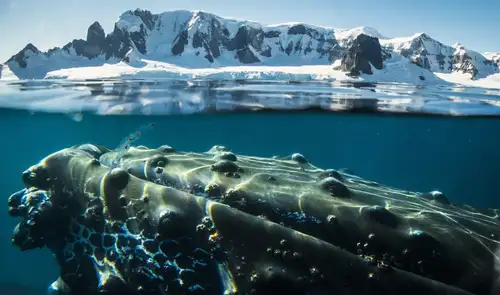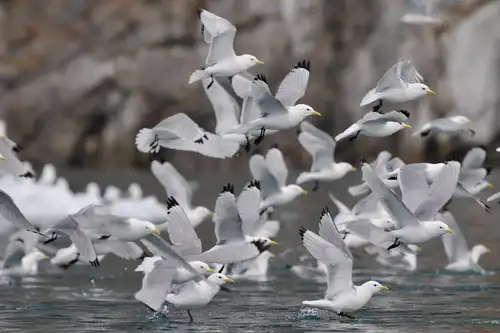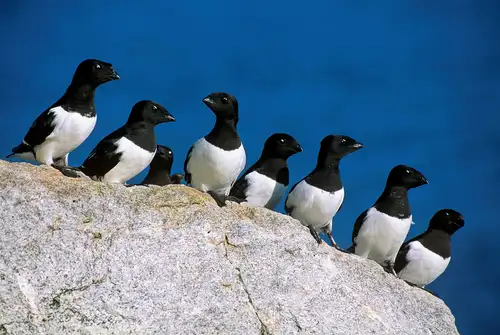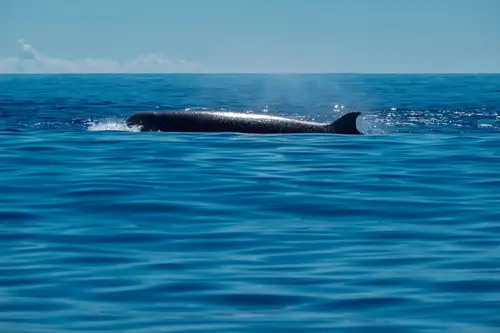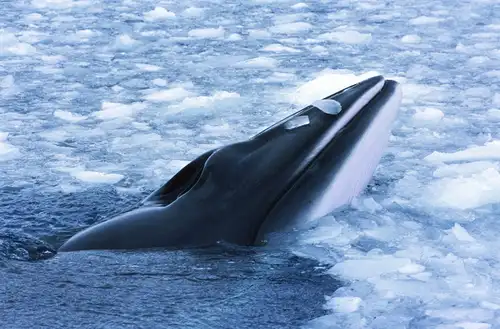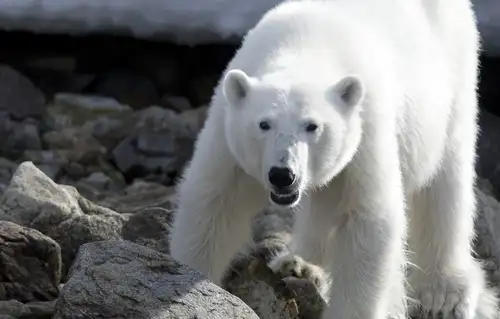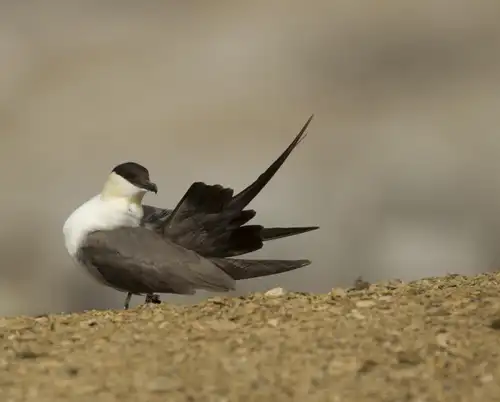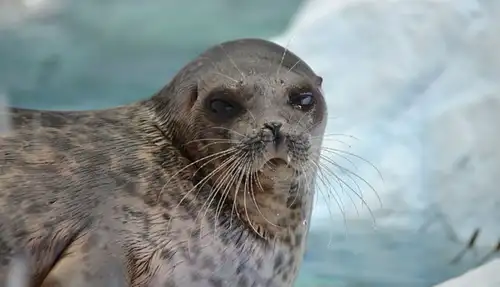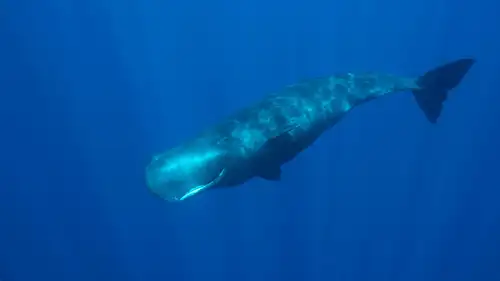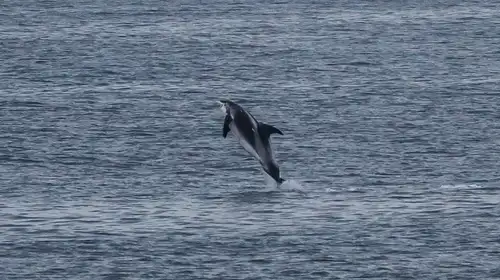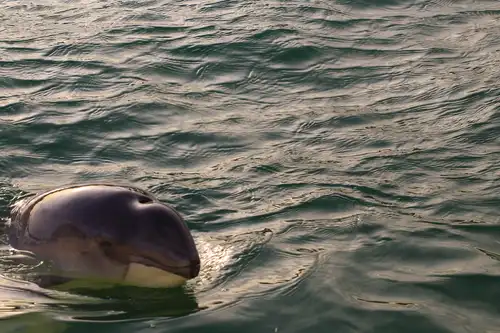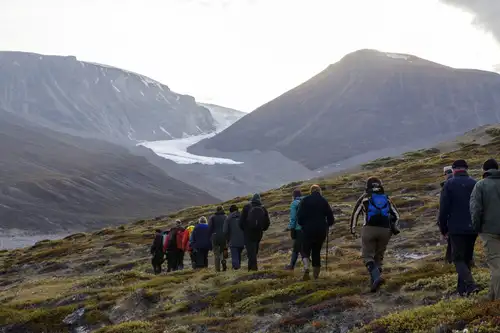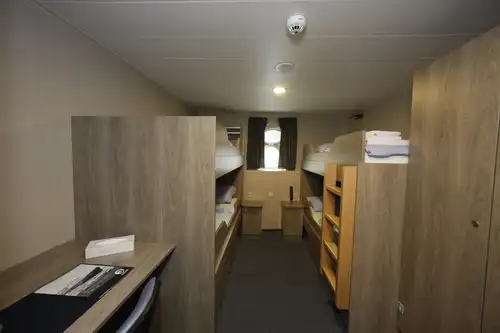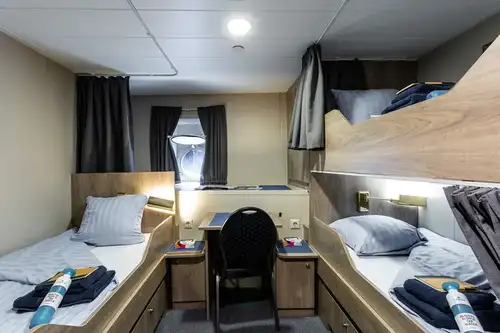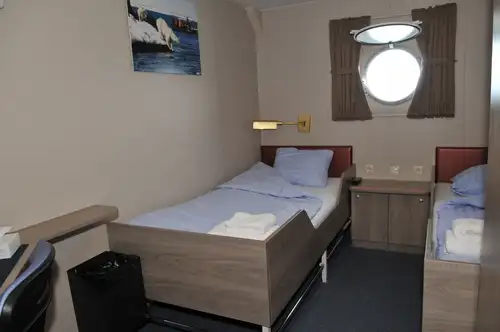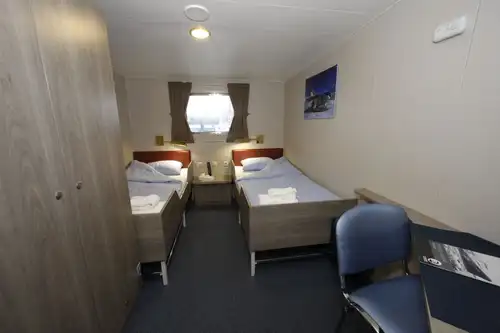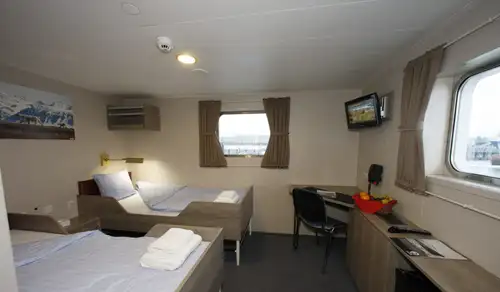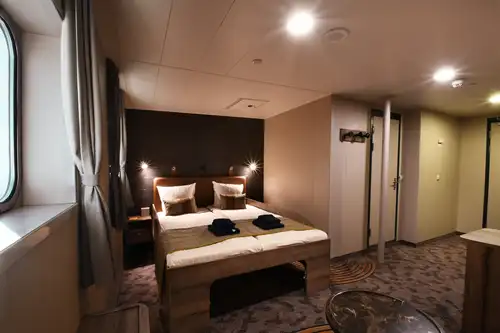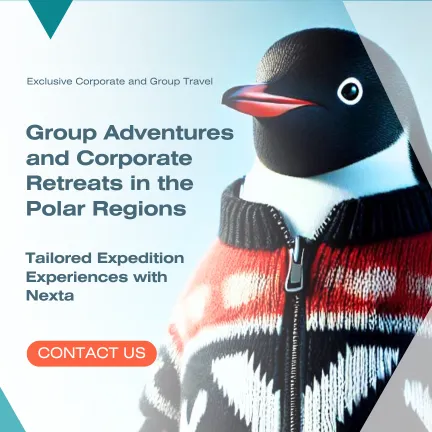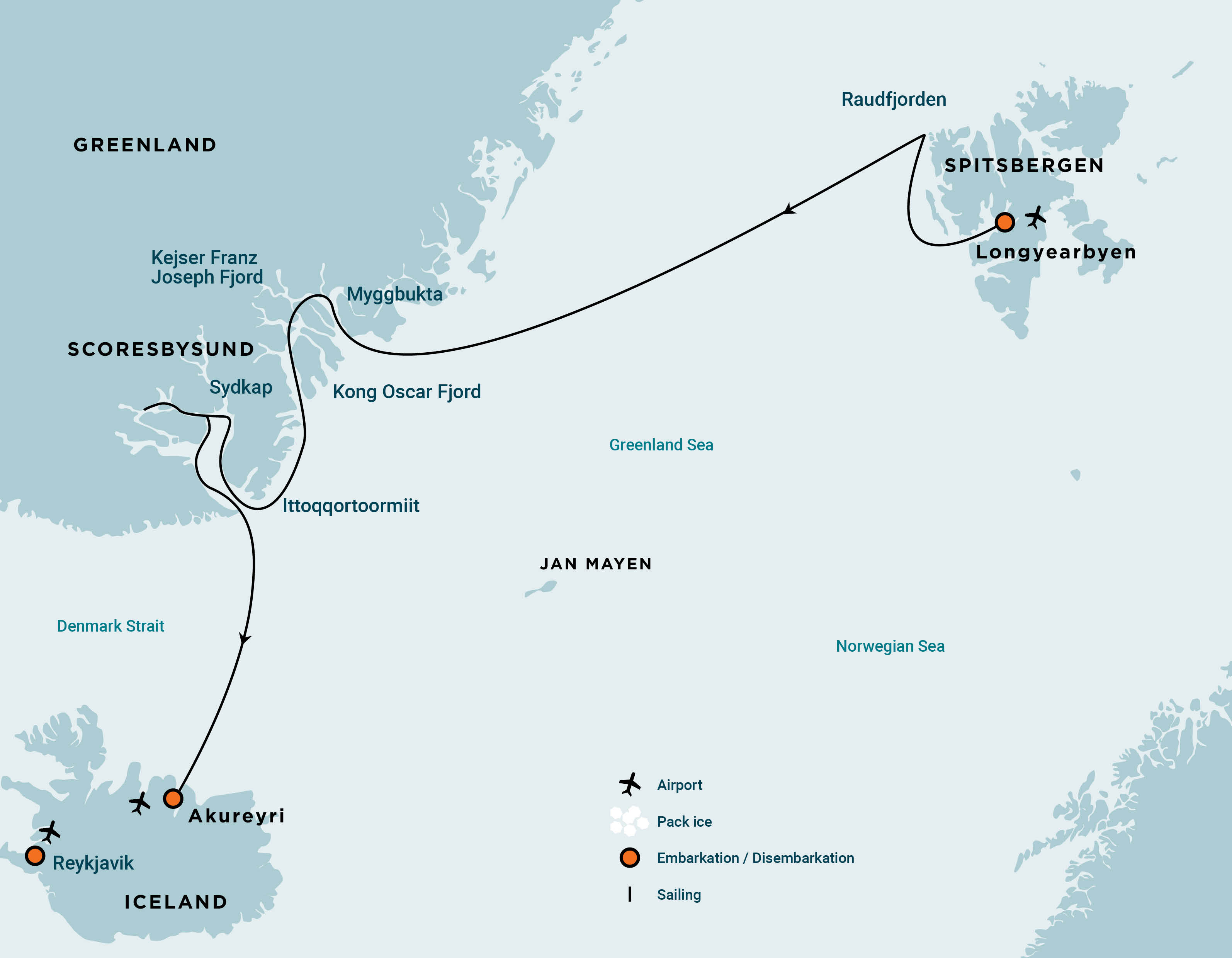


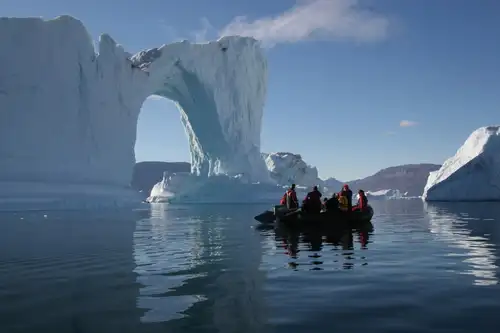
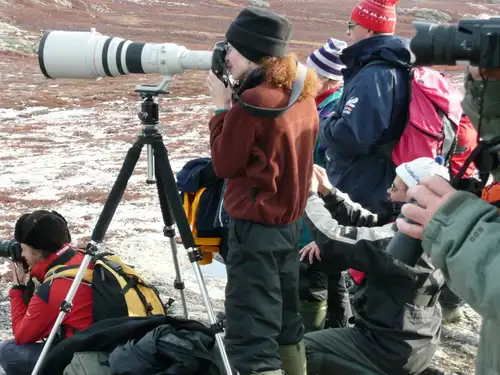
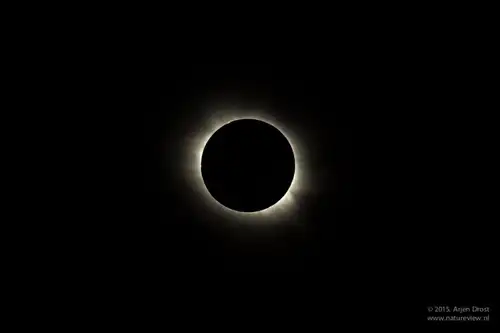
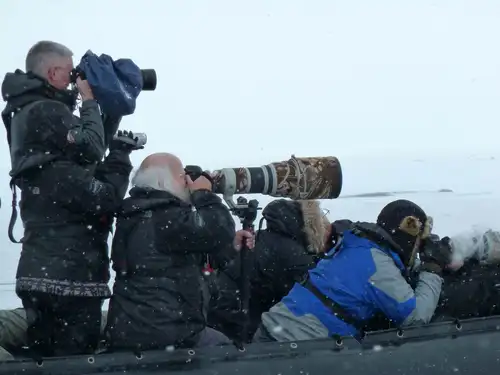
























 14 Days/13 Nights
14 Days/13 Nights




Latitude 70.878 north, longitude 27.286 west (Øfjord in Scoresby Sund)
Duration of Eclipse: 2 hours, 1 minute Duration of Totality: 2 minutes, 17 seconds
GMT (= Ittoqqortoormiit time minus 1 hour) Start of Eclipse 04.33 pm Start of Totality 05.33 pm Max. Eclipse 05.35 pm (Alt. 25.0) End of Totality 05.36 pm End of Eclipse 06.34 pm
If ice conditions prevent us from getting into Scoresby Sund, we will sail south along the ice edge and find another zone of totality along Blosseville Coast, for instance at latitude 68.630 north, longitude 26.509 west.
The primary goal of our solar eclipse expeditions is to position our ships in the center of totality on Aug 12, 2026. This itinerary allows us to reach this goal when we have an average sea ice situation, as we’ve had in the past fourteen years. If this is not the case, we will adapt the itinerary and skip landing areas on our sailing from Longyearbyen to Øfjord. If we can’t get into Scoresby Sund, we sail to Blosseville Coast, south of Søkongens Bugt.
Long HikesLong hikes are for groups of 24 passengers maximum, accompanied by two armed expedition staff and a Zodiac that will sail ahead to watch for polar bears along the shoreline. Passengers who join this activity should have the willingness and ability to hike at least 15 km (9 miles) in semi-rough terrain that includes shorelines, tundra, low hills, and river crossings. Hikes will take around six hours from start to finish, rest times included. We will hike at a modest pace and not cross any alpine terrain. Guests who do not wish to take part will have a landing in the morning at the start point of the hike, then sail to the end point for their second landing in the afternoon.
Largest town, biggest island
You touch down in Longyearbyen, the administrative center of Spitsbergen, the largest island of the Svalbard archipelago. Enjoy strolling around this former mining town, whose parish church and Svalbard Museum make for fascinating attractions. Though the countryside appears stark, more than a hundred species of plant have been recorded in it. In the early evening the ship sails out of Isfjorden, where we might spot the first minke whale of your cruise.
Sabine observatory and Raudfjorden
In 1823 the Irish scientist, soldier, and explorer Edward Sabine had an observatory on Indre Norskøya, in northwestern Svalbard. Using a pendulum to study gravity, he suggested a project to measure the meridians (lines of longitude through the poles) on Spitsbergen, the goal of which was to define the curvature of the Earth. We will try to get to Sabinehaugen, where he did his observations. Sailing next into Raudfjorden, on the north coast of Spitsbergen, we’ll see in an expansive fjord spilling with glaciers – and maybe even visited by ringed seals, bearded seals, and polar bears. The cliffs and shoreline of this fjord also support thriving seabird colonies.
Onward to East Greenland
We may eventually see the jagged edge of East Greenland sea ice flashing into sight ahead, depending on the conditions. Keep watch for whales and migrating seabirds here.
Tundra, mountains, and icebergs
As we approach Greenland, we may sail through the sea ice into Foster Bay and land at Myggebugten. Beyond the old hunters’ hut (where Norwegian trappers hunted for polar bear and Arctic fox in the first half of the 20th century), there is a sprawling tundra populated by musk oxen, with geese floating the small lakes. From here we’ll sail through Kaiser Franz Josef Fjord, surrounded by towering mountains and bright interior icebergs.
For those who choose to attend, we will have our first long hike (6-7 hours) today. We’ll start at Myggbukta station and head into Badlanddal, then turn south to Fangsthytte near Kap Bennet. A Zodiac will sail ahead of the walking party and parallel to the coast to watch out for bears. We will then sail through Kaiser Franz Josef Fjord, surrounded by towering mountains and bright interior icebergs.
Islands of Antarctic Sound
We arrive at Teufelschloss (Devil’s Castle), a mountain with layered geology. On the other side of the fjord is Blomsterbugt and the intended landing site. In the afternoon, we head into Antarctic Sound to find the islands of Ruth, Maria, and Ella. Maria is the most likely spot for a landing.
Alpefjord’s lofty peaks
In the morning, we enter Segelsällskapets Fjord, with the streaked slopes of the Berzelius Mountains bordering the north side. We land on the south shore, where ancient sedimentary formations lie right at our feet. A hike takes you near a small lake with good chances to see musk oxen, Arctic hares, and ptarmigans. In the afternoon, the ship ventures into Alpefjord, aptly named for the spire-like peaks that thrust up around it. We may then embark on a Zodiac cruise around Gully Glacier, which once blocked access to the interior of these waters. Continuing deep into the fjord, we’ll experience a definitive Greenland adventure.
Sights of the Arctic autumn
The first half of the day we will spend in Antarctic Havn, an extensive valley where you can spot groups of musk oxen. At this time of year, the sparse vegetation is wearing the fiery colors of autumn.
Largest fjord in the world
Today we reach Scoresby Sund, sailing along the glaciated Volquart Boons Kyst. We may also enjoy a Zodiac cruise past one of the glacier fronts, along with a visit to the basalt columns and ice formations of Vikingebugt. In the afternoon, we plan to sail along the east coast of Milne Land among a multitude of giant icebergs. If we can also land at Charcot Havn, we will make a walk to Charcot Glacier before continuing to Bjørneøer.
Total Solar Eclipse
We will have a Zodiac cruise near Sorte Ø in the morning, surrounded by icebergs. Their austere blue-white contrasts sharply with the sediment slopes nearby. At midday we will position the ship in the center of the moon shadow in Øfjord. In the afternoon, we watch the solar eclipse either from the ship or one of the nearby shores.
Enormous bergs, Arctic hares
In the morning, we will encounter colossal icebergs, some over 100 meters (330 feet) high and more than a kilometer (.6 miles) long. We’ll then land near Sydkap, with fine views of Hall Bredning and Arctic hares. Today's long hike goes from Sydkap to Satakajik, showing us the remains of Thule winter houses built with whale vertebrae. In the evening, we sail into Øfjord.
Settlement at Scoresby Sund
Today we make a tundra landing on Liverpool Land, in Hurry Inlet. The afternoon stop is Ittoqqortoormiit, the largest settlement in Scoresby Sund at about four hundred inhabitants. At the post office, you can buy stamps for your postcards or just stroll around to see the sled dogs and drying skins of seals and musk oxen. In the afternoon, we sail south, passing the picturesque landscapes of the Blosseville Coast.
Sea life on our way to Iceland
A sea day grants us the opportunity to spot whales and seabirds.
Journey’s end at Akureyri
Even the greatest adventures eventually come to an end. We disembark in Akureyri, where on request you can transfer by chartered bus (six-hour drive that must be booked in advance) to the bus stop at Harpa Concert Hall at Austurbakki, Reykjavík.







































































m/v Plancius
Our most longstanding vessel, Plancius, is a classic choice for many of our most popular polar voyages.

Specifications
| Passengers: | 108 passengers in 50 cabins |
| Staff & crew: | Crew 40 | Guides 8 | Doctor 1 |
| Length: | 89 meters (293 feet) |
| Breadth: | 14,5 meters (47 feet) |
| Draft: | 5 meters (16 feet) |
| Ice class: | 1D (Plancius has a Lloyds class notation 100A1 Passenger ship, Ice Class 1D at a draught of 5 meters) |
| Displacement: | 3211 tonnes |
| Propulsion: | 3x Diesel-Electric |
| Speed: | 10.5 knots average cruising speed |
Cabins Gallery


Ship Interior Gallery


Ship Exterior Gallery


M/v “Plancius” was built in 1976 as an oceanographic research vessel for the Royal Dutch Navy and was named “Hr. Ms. Tydeman”. The ship sailed for the Dutch Navy until June 2004 and was eventually purchased by the company. The vessel was completely rebuilt as a passenger vessel in 2009 and complies with the latest SOLAS-regulations (Safety Of Life At Sea). M/v “Plancius” is classed by Lloyd’s Register and flies the Dutch flag.
Perfect for any expedition
M/v “Plancius” accommodates 108 passengers with private toilets and shower in 4 quadruple porthole cabins, 9 twin porthole cabins, 25 twin cabins with windows and 2 twin deluxe cabins, all (ca. 12,5 square meters) and 10 twin superior cabins (ca. 21 square meters). All cabins offer lower berths (one queen-size bed in the superior cabins and two single beds in the twin cabins), except for the 4 quadruple cabins (for 4 persons in 2x upper and lower beds).
Plancius: a vessel with comfort and character
Please be aware that a small number of cabins may have a partially obstructed view due to the design requirements of the ship. The best view is always on the outer deck or the bridge. The vessel offers a restaurant/lecture room on deck 3 and a spacious observation lounge (with bar) on deck 5 with large windows, offering a full panorama view. M/v “Plancius” has large open deck spaces (with full walk-around possibilities on deck 4), giving excellent opportunities to enjoy the scenery and wildlife. She is furthermore equipped with 10 Mark V zodiacs, including 40 HP 4-stroke outboard engines and 2 gangways on the starboard side, guaranteeing a swift zodiac operation.
M/v “Plancius” is comfortable and nicely decorated, but is not a luxury vessel. Our voyages in the Arctic and Antarctic regions are primarily defined by an exploratory educational travel program, spending as much time ashore as possible. Plancius fully meets our demands to achieve this. The vessel is equipped with a diesel-electric propulsion system which reduces the noise and vibration of the vessel considerably. The 3 diesel engines generate 1.230 horsepower each, giving the vessel a speed of 10 - 12 knots. The vessel is ice-strengthened and was specially built for oceanographic voyages. M/v “Plancius” is manned by an international crew of 40 (20 nautical crew and 20 hotel crew), 8 expedition staff (1 expedition leader, 1 assistant expedition leader and 6 guides/lecturers), and 1 doctor.
Dress code
In keeping with our expedition atmosphere, dress on board is informal. Bring casual and comfortable clothing for all activities. Keep in mind that much of the spectacular scenery can be appreciated from deck, which can be slippery. Bring sturdy shoes with no-slip soles and make sure the parka is never far away in case of the call "Whales!" comes over the loudspeaker and you have to dash outside. Wear layers since it is comfortably warm aboard the ship - and often cold on deck.
Currency & payment
Refreshments from the bar and souvenirs will be charged to your cabin. The day before departure you can settle your bill with the Hotel Manager and pay by credit card (Visa or MasterCard) or cash (Euro or Dollar). We do not accept cheques of any kind. The price and standard currency on board our vessels is the Euro. Other currencies may be accepted at the discretion of the hotel manager at prevailing rates.
Electric current
The electrical supply aboard the ship is 220v, 60Hz. Electrical outlets are standard European with two thick round pins. You may need a 220v/110v converter.
Gratuities
The customary gratuity to the ship's service personnel is made as a blanket contribution at the end of the voyage which is divided among the crew. Tipping is a very personal matter and the amount you wish to give is at your discretion. As a generally accepted guideline, we suggest 8-15 Euro per person per day. It is better for the crew, if you can give them cash.
Non-smoking policy
On board our vessels we have a non-smoking policy. It is prohibited to smoke inside the ship. You can smoke in the designated smoking areas. Please respect the wishes of non-smokers.
Your physical condition
You must be in good general health and you should be able to walk several hours per day. The expedition is ship-based and physically not very demanding. Although we spend as much time as possible ashore, you are welcome to remain aboard the ship if you like. To join most excursions, you must be able to get up and down the steep gangway from the ship to the water level to board the Zodiacs. Staff will assist you in and out of the boats. This will become progressively easier with practice. Ashore it can be slippery and rocky. You are travelling in remote areas without access to sophisticated medical facilities, so you must not join this expedition if you have a life-threatening condition, or need daily medical treatment.
- Expeditions cruises are trips that focus on maximum contact with local wildlife, natural phenomena, and locations of cultural/scientific significance. These trips are best enjoyed in relatively small groups led by highly experienced expedition guides.
- Not during the summer, which is when the majority of our voyages take place. It depends on where you go in the Arctic, but temperatures can get up to 10°C (50°F) and don't tend to drop too far below 0°C (32°F). Antarctica is slightly colder, but still warm in the austral summers, reaching up to 2°C (36°F) depending on your location, and tending not to get too much lower than that during the warm months. You're only likely to experience colder weather during our fall and winter Arctic trips, where temps can range between -34°C to 0°C (-29°F to 32°F). But you'll have the northern lights to keep you warm.
- No, you are not able to get cash advances on the vessel.
- Aboard Hondius, Ortelius, Plancius, and Rembrandt van Rijn, refreshments and souvenirs will be charged to your cabin. The day before disembarking, you can settle your bill with the hotel manager and pay by Visa or MasterCard, Diners Club/Discover, Union Pay, or cash (Euro or USD). The prices and standard currency on board all of our vessels is the Euro.
- Svalbard's diverse list of wildlife is one of its most compelling features, especially for photographers and wildlife enthusiasts. Svalbard cruises also offers an intriguing landscape with many different types of geological features from high mountains to ice capped ancient sea floor. Glaciers and fjords are multifold and the sea ice is a major attraction.
- The sun sets for the last time in Spitsbergen in mid-September and rises above the horizon again in mid-February. The winter landscape and temperatures prevail until May.
- There are in total 50 cabins at the Plancius: 4 quadruple cabins with private toilet and shower 9 twin porthole cabins 25 twin cabins with window 2 twin deluxe cabins (ca 15 square meters) 10 superior cabins (ca 21 square meters)
- The ship Plancius was built in 1976 as an oceanographic research vessel for the Royal Dutch Navy.
You May Also Like



Alpine Peaks of Spitsbergen, Ski & Sail
 8 Days / 7 Nights
8 Days / 7 Nights
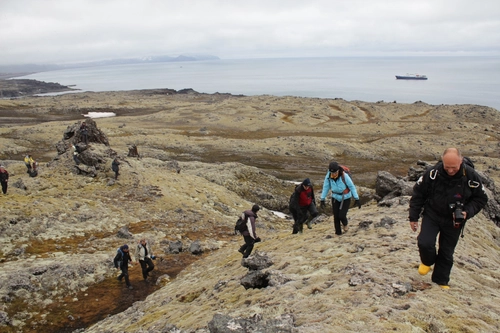
Arctic Ocean - Fair Isle, Jan Mayen, Ice Edge, Spitsbergen, Birding
 10 Days / 9 Nights
10 Days / 9 Nights
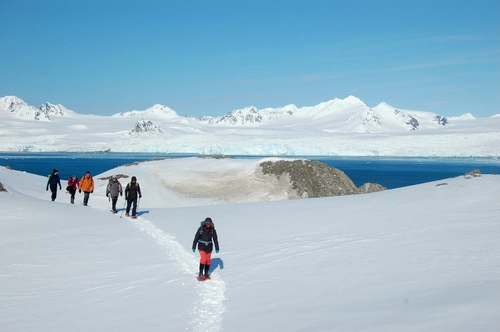
North Spitsbergen - Arctic Spring , Hike & Sail
 8 Days / 7 Nights
8 Days / 7 Nights
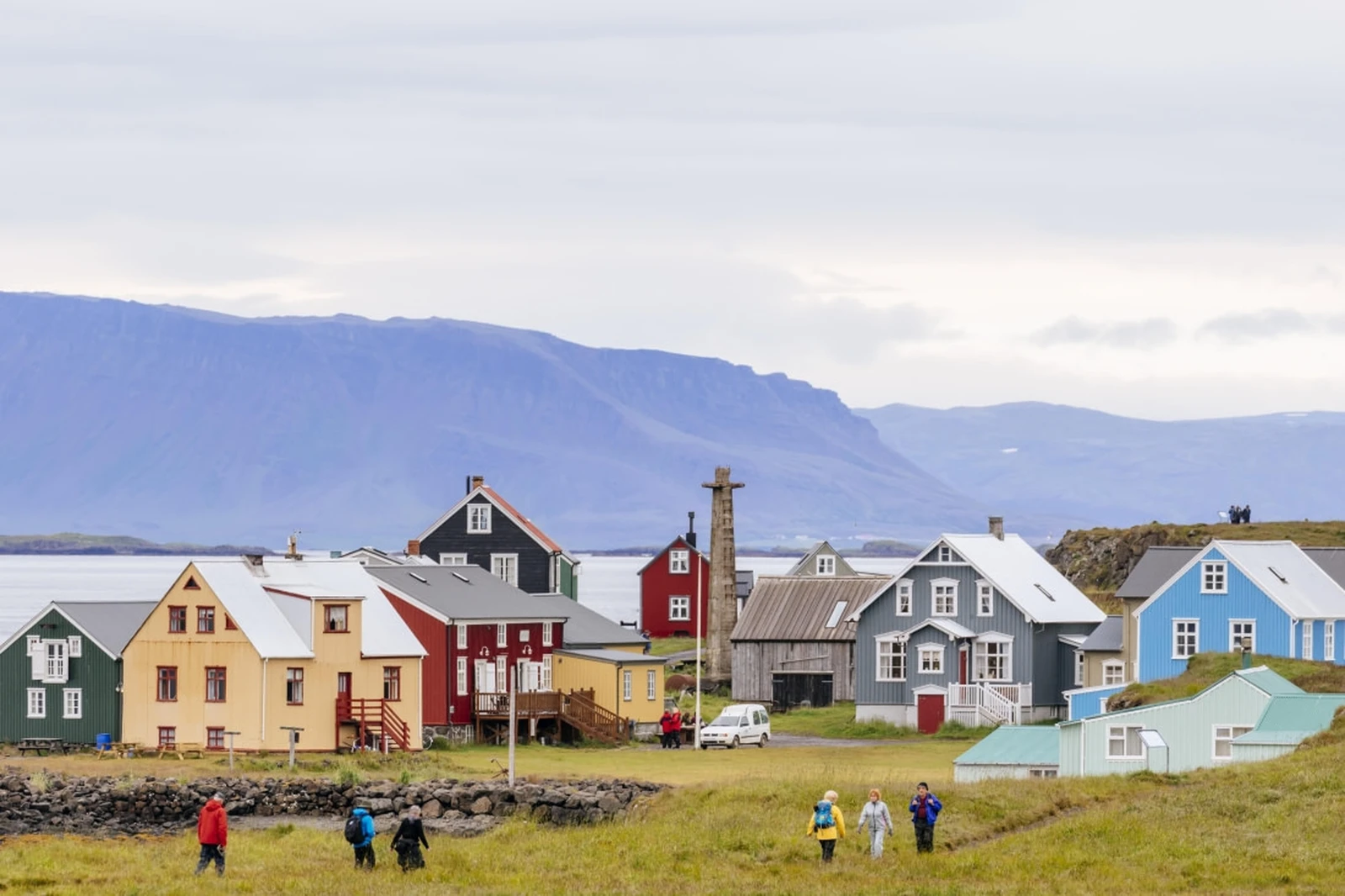
Northwest Iceland Explorer - Into the Greenland sea ice
 8 Days / 7 Nights
8 Days / 7 Nights
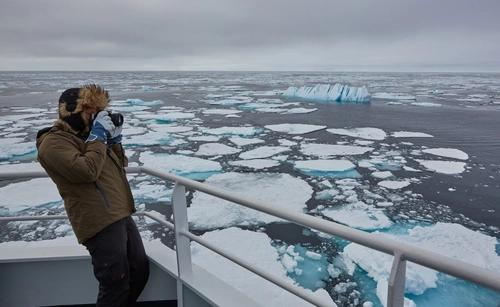
North Spitsbergen Explorer - Into the pack ice - Polar Bear Special
 8 Days / 7 Nights
8 Days / 7 Nights

Arctic Ocean - Jan Mayen, Ice edge, Spitsbergen, Birding
 9 Days / 8 Nights
9 Days / 8 Nights
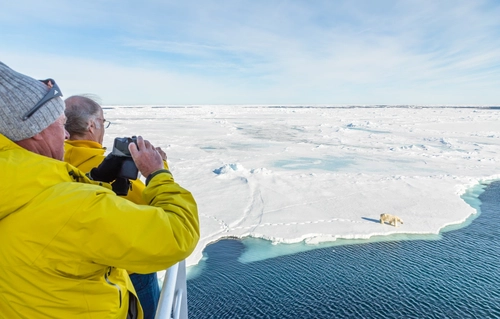
Arctic Ocean - Fair Isle, Jan Mayen, Ice edge, Spitsbergen, Birding - Summer Solstice
 10 Days / 9 Nights
10 Days / 9 Nights
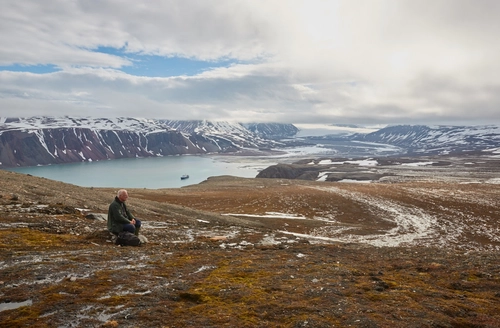
North Spitsbergen Explorer - Versatile landscapes, sea ice & wildlife
 8 Days / 7 Nights
8 Days / 7 Nights
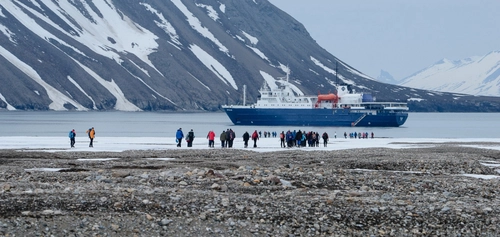
North Spitsbergen Basecamp – Summer Solstice - Free Kayaking, Hiking, Photo Workshop, Diving (supplemented)
 8 Days / 7 Nights
8 Days / 7 Nights
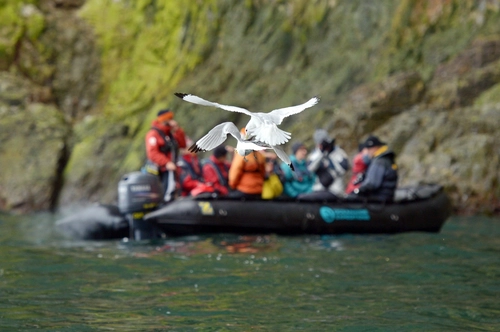
North Spitsbergen Explorer - Versatile landscapes, sea ice & wildlife - Summer Solstice
 8 Days / 7 Nights
8 Days / 7 Nights
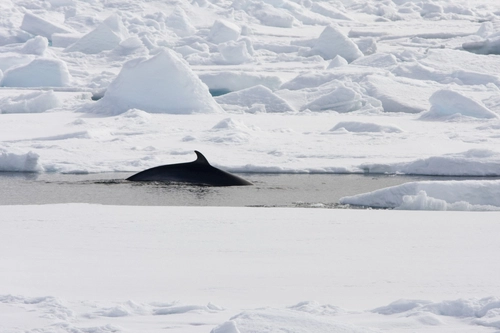
North Spitsbergen - Arctic Summer
 11 Days / 10 Nights
11 Days / 10 Nights

East Spitsbergen - Home of the Polar Bear, Including Long Hikes & Cleaning the Shores
 8 Days / 7 Nights
8 Days / 7 Nights
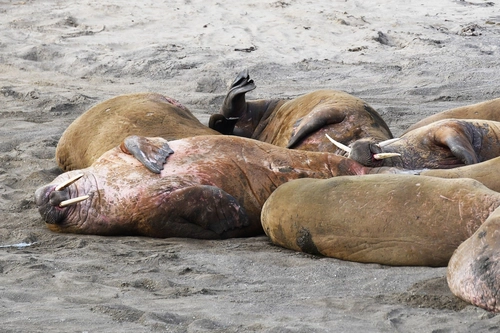
Around Spitsbergen, In the realm of Polar Bear & Ice
 10 Days / 9 Nights
10 Days / 9 Nights

North Spitsbergen Explorer – Into the Pack Ice – Polar Bear & Whale Special
 10 Days / 9 Nights
10 Days / 9 Nights
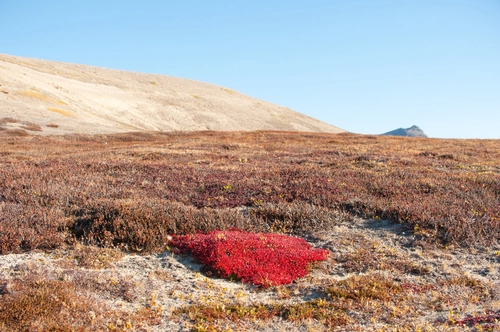
Northeast Greenland Solar Eclipse Explorer Voyage
 14 Days / 13 Nights
14 Days / 13 Nights
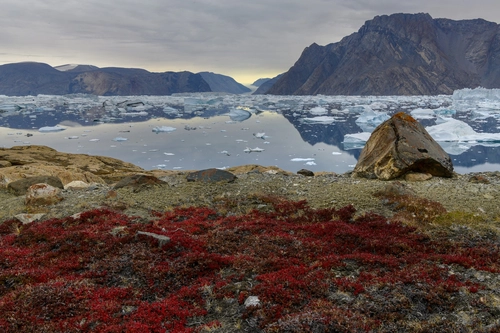
Spitsbergen - Northeast Greenland, Fly & Sail
 20 Days / 19 Nights
20 Days / 19 Nights
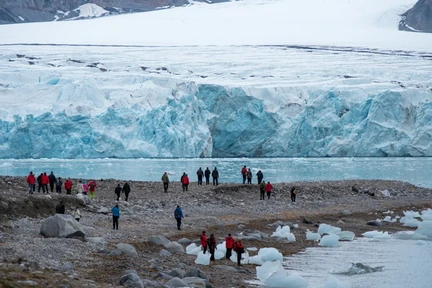
Around Spitsbergen incl. Nordaustlandet
 10 Days / 9 Nights
10 Days / 9 Nights
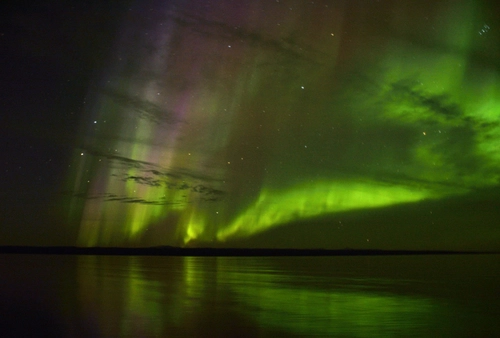
East Greenland, Scoresby Sund - Iceland , Aurora Borealis, Fly & Sail
 12 Days / 11 Nights
12 Days / 11 Nights
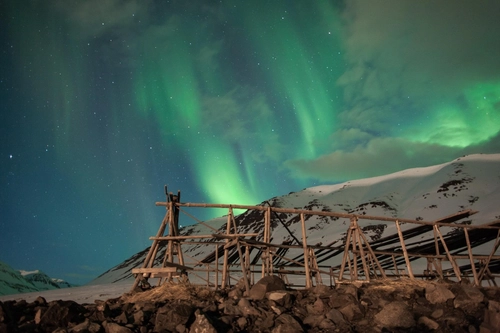
Northeast Iceland Explorer , Aurora Borealis, Hike & Sail - Incl. Bus back up
 7 Days / 6 Nights
7 Days / 6 Nights

Alpine Peaks of Spitsbergen - Ski & Sail
 8 Days / 7 Nights
8 Days / 7 Nights

Arctic Ocean - Fair Isle, Jan Mayen, Ice Edge, Spitsbergen, Birding Special
 10 Days / 9 Nights
10 Days / 9 Nights

North Spitsbergen Explorer - Versatile Landscapes, Sea Ice & Wildlife
 8 Days / 7 Nights
8 Days / 7 Nights

North Spitsbergen Explorer - Into the Pack Ice - Polar Bear Special
 8 Days / 7 Nights
8 Days / 7 Nights

North Spitsbergen, Arctic Summer - Summer Solstice
 11 Days / 10 Nights
11 Days / 10 Nights

Northwest Iceland Explorer - Into the Greenland Sea Ice - Summer Solstice
 8 Days / 7 Nights
8 Days / 7 Nights

North Spitsbergen Explorer - Versatile Landscapes, Sea Ice & Wildlife - Summer Solstice
 8 Days / 7 Nights
8 Days / 7 Nights

North Spitsbergen Explorer - Into the Pack Ice - Polar Bear Special - Summer Solstice
 8 Days / 7 Nights
8 Days / 7 Nights

Arctic Ocean - Spitsbergen: Jan Mayen, Ice Edge & Birding - Summer Solstice
 9 Days / 8 Nights
9 Days / 8 Nights

North Spitsbergen Basecamp - Free kayaking, Hiking, Photo Workshop
 8 Days / 7 Nights
8 Days / 7 Nights

North Spitsbergen, Arctic Summer
 11 Days / 10 Nights
11 Days / 10 Nights

Around Spitsbergen, in the Icy Realm of the Polar Bear
 10 Days / 9 Nights
10 Days / 9 Nights

A Taste of North Spitsbergen - Compact Arctic Adventure
 6 Days / 5 Nights
6 Days / 5 Nights

South Spitsbergen Explorer - Bear Island - Diving (supplemented)
 10 Days / 9 Nights
10 Days / 9 Nights

Around Spitsbergen - Arctic Summer
 15 Days / 14 Nights
15 Days / 14 Nights

Around Spitsbergen and Nordaustlandet, In the Icy Realm of the Polar Bear
 10 Days / 9 Nights
10 Days / 9 Nights

Spitsbergen, Northeast Greenland & Scoresby Sund, Including Long Hikes
 14 Days / 13 Nights
14 Days / 13 Nights

South Spitsbergen, Bear Island & Mainland Norway - Aurora Borealis
 6 Days / 5 Nights
6 Days / 5 Nights

East Greenland, Scoresby Sund - Iceland, Aurora Borealis, Fly & Sail
 12 Days / 11 Nights
12 Days / 11 Nights

Northeast Iceland Explorer, Aurora Borealis, Hike & Sail - Incl. Bus back up
 7 Days / 6 Nights
7 Days / 6 Nights
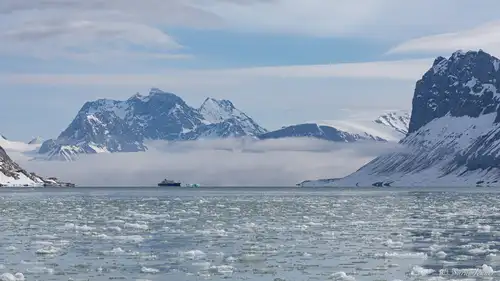
Svalbard vs. the Canadian Arctic
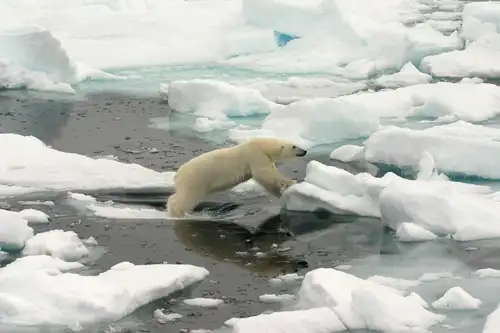
Spitsbergen: a true polar bear trip

Amphibian, reptiles and herbivore mammals in the Arctic
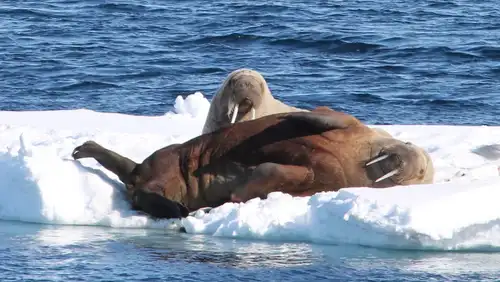
Svalbard’s 12 Most Iconic Animals

The Enchanting Islands of Svalbard

Inside the Svalbard Global Seed Vault
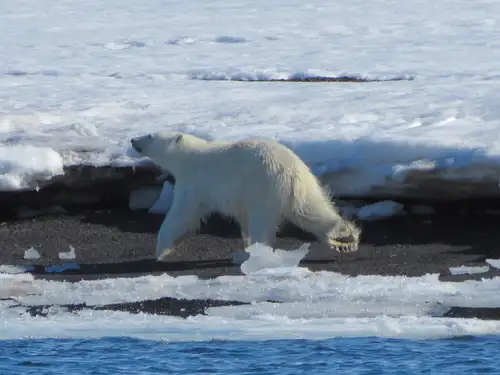
Polar bear feast
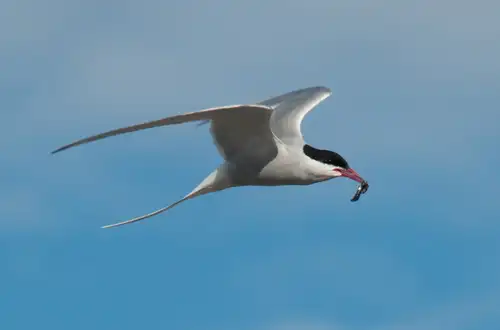
Birding Opportunities Abound in Spitsbergen
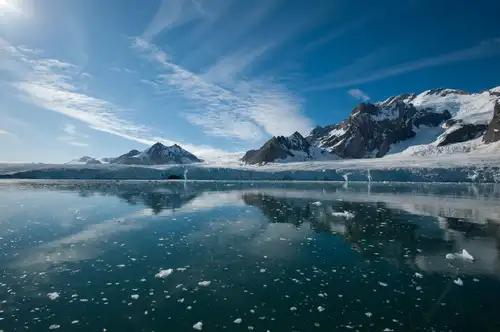
A Bug’s Life in Svalbard

Arctic Icon: 10 Facts about the Polar Bear

“The polar bear will still be there”
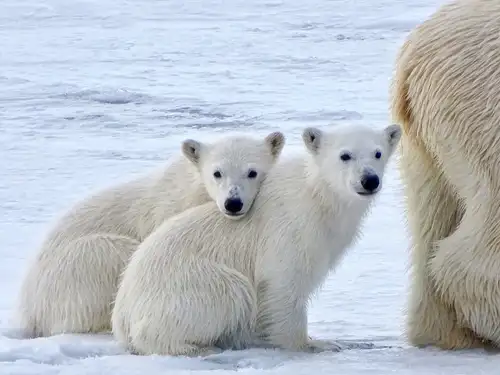
Where the Polar Bears Roam
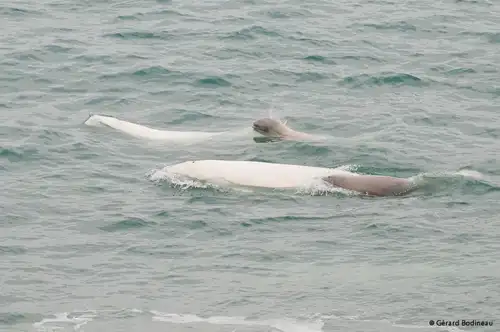
The Mysteries of the Beluga Whale
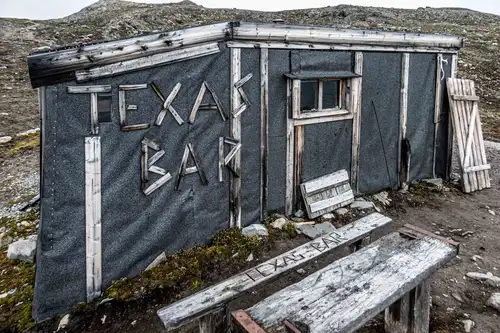
Svalbard’s Texas Bar

Around Spitsbergen vs. North Spitsbergen
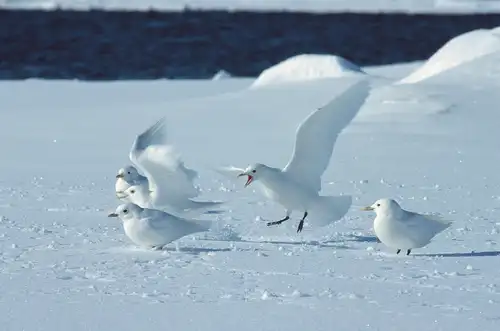
Birds of the North: 29 Arctic Birds and Seabirds
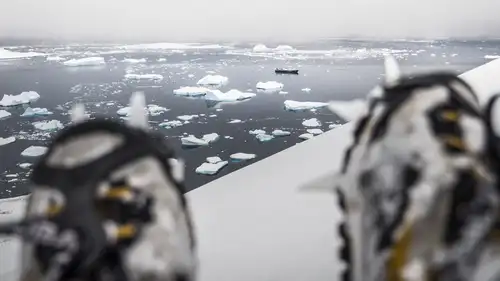
Arctic and Antarctic Basecamp Cruises – Choose Your Own Adventure
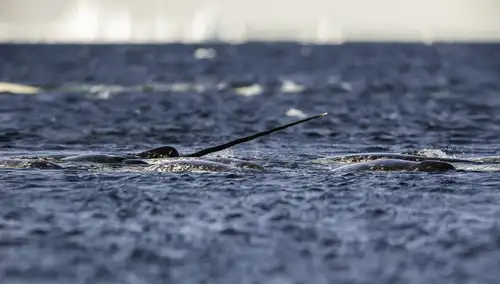
Narwhals: the Aquatic Unicorns of the Arctic
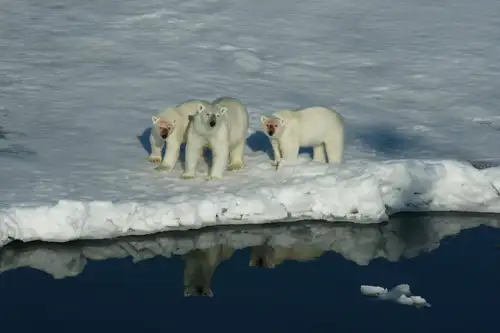
Polar Bear Primer: Eight Facts About the Arctic Wanderer
